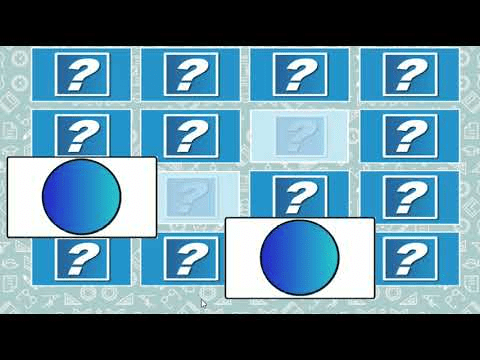This leaves two spaces for the two C cards, and so only one way to place them, giving $5 \times 3 \times 1 = 15$ possibilities. Then the first B must go in the first available slot, leaving three options for the second B. The first card must be A again, and there are five remaining choices for the second A. With $n = 3$, there are 15 possible sequences. The chance that of getting a match on your first turn is $\frac$. In which case, on your second turn you pick a new card, which must be either A or B, allowing you to get a match, so the game take three turns.
Alternatively you pick A then B on your first turn. Either you get a match on your first turn, in which case you also get a match on your second turn and the game is over in two turns. With $n = 2$, there are two options for what can happen. You will win in one turn no matter regardless of your strategy. If two matching cards are found, they are removed from the board. The students task is to find two cards that match. Starting back at $n = 1$, the game is, again, trivial. Halloween memory (12 pairs) Memory - The level consists of 18 pairs (consisting of identical images paired with each other), but a maximum of 12 pair are practiced per game round.
Do this for both cards you pick on your turn. Now you have to have a strategy, but the perfect strategy is quite straightforward: if you can make a pair, then make a pair, otherwise turn over a card you haven't previously seen. Going, from one extreme to the other, what if you have perfect memory (or if you just don't turn the cards back over).


